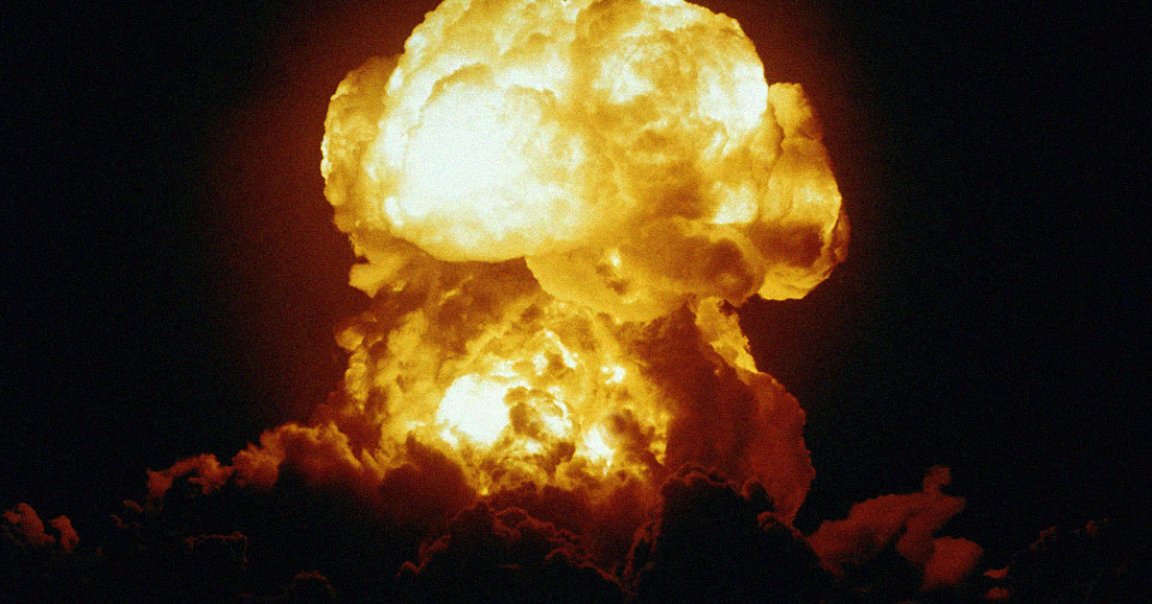
Very Grim
These, as we know, are not internationally chill times — so much so that, unfortunately, nuclear war has been on much the collective mind.
But while verbal — and in North Korea’s recent case, physical — nuclear threats have been made, how likely is it that we’ll see an actual nuclear conflict? It’s a seemingly impossible question, but one MIT physics professor Max Tegmark believes he has the answer to.
“Many people have asked me what I think the odds are of an imminent major US-Russia nuclear war,” the professor wrote on the blog LessWrong. “My current estimate is about the same as losing in Russian roulette: one in six.” Great.
Kaboom vs. KABOOM
Tegmark’s argument centers on a David vs. Goliath framework — the former being Ukraine, the latter being Russia. And within that dynamic, the professor explores a series of possible outcomes and their likelihoods.
His worst case scenario is labelled “KABOOM,” which in his words marks “a major US-Russia nuclear war that might cause nuclear winter and kill most people on Earth.” But again, that’s worst case, and Tegmark offers a number of other scenarios that might happen either instead of KABOOM or en route to it.
“‘Kosovo’ & ‘Vietnam’ refer to scenarios where one side wins outright (breakaway succeeds & Goliath is expunged, respectively),” he writes, “‘Libya,’ ‘Korea’ & ‘Finland’ refer to intermediate outcomes involving simmering war, frozen war and full peace, respectively.”
The academic ultimately concluded through his risk model that — based mostly on his own psychoanalysis of Putin, NATO, and the general world public — there’s an 80 percent chance that NATO will take some form of collective military action against Russia; a 70 percent chance that Russia will retaliate against that NATO offensive with nuclear weapons, which could ultimately bring us to KABOOM territory; and a 30 percent chance that both sides decide to de-escalate.
Distill those percentages, and as Tegmark writes, you get a roughly one-in-six figure.
Geopolitical Shituation
It’s important to remember that Tegmark’s guess is, in a way, as good as anyone’s.
There’s no true scientific model for human nature, which is what this ultimately comes down to. Nuclear war doesn’t just happen. A button, somewhere, has to be pressed — though that seems to be exactly what the prof is trying to remind us.
READ MORE: Why I think there’s a one-in-six chance of an imminent global nuclear war [LessWrong]
More on nuclear war: Horrific Simulation: Nuclear War Would Kill Five Billion People